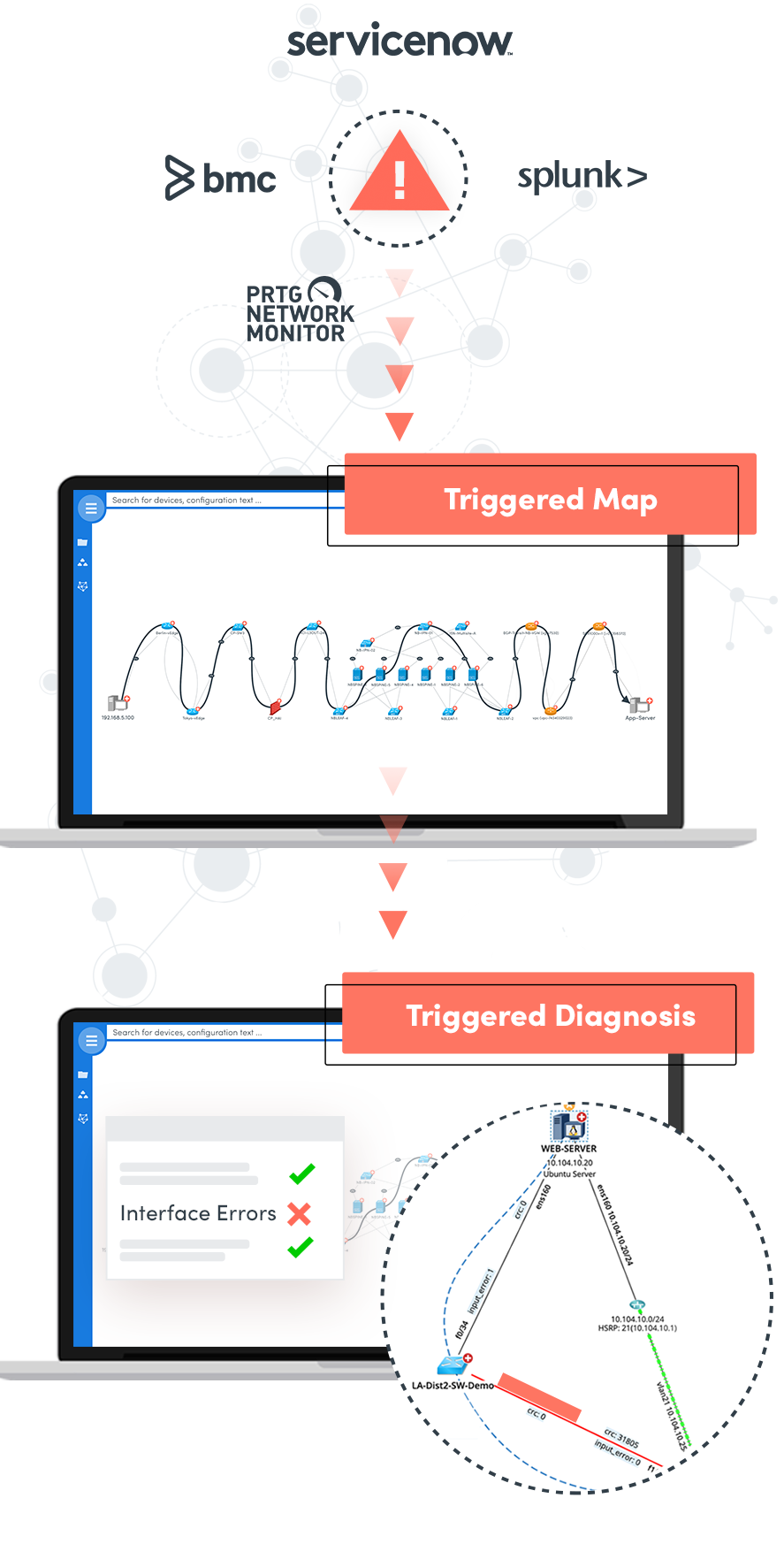The App Store for Network Automation
Don’t you wish everything in life was as simple as an app store – “there’s an app for that” was the slogan everyone knew. The absolute simplicity of browsing an...
Network management challenges for highly complex infrastructure are harder to overcome than ever. NetOps teams have been tasked with an enormous number of challenges: From solving thousands of tickets a day generated from tools like SolarWinds or ServiceNow to ensuring network uptime across multi-hybrid networks – multi-cloud, traditional, virtual and software-defined.
But the reality is pretty tough: Not every company has sufficient resources to manage today’s complex networks. It is pretty clear that the more tasks teams have to manage manually in a short period of time, the more error-prone the entire system becomes. With regard to the network, this may mean that operational disruptions limit the productivity of employees for much longer than necessary.
Enterprises experience thousands of IT events every day – many are urgent, and all require manual effort, causing longer resolution times. You know that your business can’t wait. So, here is the question: How can you maximize network uptime and minimize MTTR from the public cloud to the data center to the access edge and everywhere in between, across branches and geographies? To be honest, there is a need of a certain degree of automation to be able to perform a series of balancing acts. Let’s take a look at some possible steps.
If you work with IT Service Management (ITSM) platforms, you should definitely take a look into the incidents your service desk works on. These tools usually give a very deep visibility in to what problems occur day after day. Now you can pick 3 to 5 common tickets and start automating them. But don’t start with the difficult ones, go step by step.

If you work with NetBrain, you should already have an integration with all your existing monitoring or ticketing tools and can benefit from triggered diagnostic automation – to eliminate idle time, identify problems faster, and rule out potential problems automatically. After getting all these data, you can easily isolate the root cause and save your knowledge into an executable runbook.
NetBrain allows engineers to organize common troubleshooting steps into repeatable Runbooks (without coding!). When troubleshooting, junior engineers can leverage senior engineers’ expertise using these step-by-step diagnostics. Within seconds, hundreds of potential issues can be analyzed- across two devices or 200.
In this step it is time to take a look at less common network issues. For these kind of problems, NetBrain can easily and quickly create a map of the relevant part of the network on demand. This could be a path of an application flow or a site map. This helps to provide visualization across any infrastructure – multi-cloud, traditional, virtual, SD-WAN or SDN, helping you to see where to take action. Any engineer can now use interactive Data Views to display additional information (routing protocols, interface information, QoS metrics, …) on that map to get the visual support to understand easily the state of the network, without having to telnet/SSH into a multitude of devices.
All these troubleshooting steps are being automatically documented and can be easily taken over by the Level 2 or Level 3 engineer.
Last but not least, to maximize network uptime, you need the entire IT team to work together to solve issues. With NetBrain Incident Collaboration, users across IT – NetOps, SecOps, DevOps, and more – troubleshoot collaboratively and share their knowledge and experience to fix network issues faster.
Now we have established that Automation is a must, let’s see how it can help to manage your hybrid network and give you full visibility of any network data.
Many of today’s network infrastructures are moving from the traditional LAN/WAN towards SDN and a hybrid cloud model which makes the network more complex despite the won agility for provisioning services. The consequence of this is that the manual methods of documentation (like Visio) and troubleshooting (via CLI) no longer scale.
NetBrain discovers and decodes the entire hybrid infrastructure to let you automatically map the network end-to-end, allowing you to manage it from a single interface.

With NetBrain, you dynamically visualize each aspect of your traditional network – the data center, campus, or WAN – from both a layer-3 and layer-2 perspective.
NetBrain helps you visualize your ACI infrastructure from several perspectives, including overlay, underlay, and application centric views. This makes it possible for the whole team to help troubleshoot ACI, not just the architects who engineered it.
NetBrain helps teams visualize their NSX infrastructure and maps the relationship between the network and the VMs it runs on. VM and network teams are finally on the same page, working together to resolve problems. Learn more about NSX Mapping Automation.
The WAN has undergone a lot of change – from frame relay to MPLS and IPSec VPNs. Now, SD-WAN is quickly gaining adoption. With NetBrain, it’s easy to dynamically map your WAN no matter what technology you use.
When there’s an issue with a cloud application, it’s often difficult to pinpoint the cause. Teams with a hybrid cloud may struggle to answer the question “whose network is the problem on”? NetBrain helps IT teams get on the same page as their cloud provider, offering visibility across the entire shared network.
As you can see, network management challenges are waiting for IT teams just around the corner and in times of continuous technology development, there is a need of automation in order to meet the company needs: network uptime throughout business across any (hybrid) network infrastructure. If you can achieve this, you have already won half the battle.